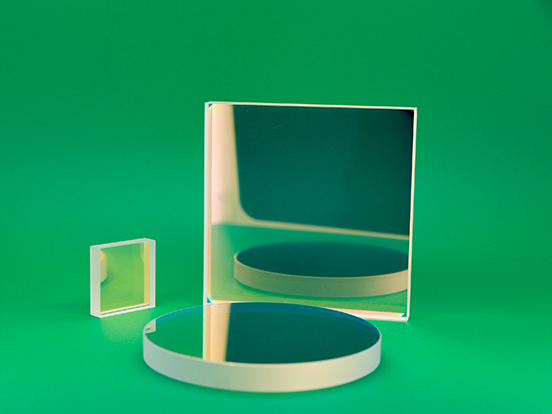Common optical mirrors and their application scenarios
Sep. 06, 2024
The optical mirrors is an optical element that operates based on the law of reflection and is mainly used for beam turning, interferometry, imaging or illumination. The characteristics of a mirror depend on the substrate material, optical coating and surface quality. The standard process for production is to coat a highly polished base material. Different materials and processes used for base material and coating will produce optical mirrors with different performances. Common substrate materials include N-BK7 optical glass, fused silica, float glass, and so on. Optical coating determines the reflectivity and stability of the mirror, it is the most critical component of the mirror, the mirror coatings is usually made of metal materials or dielectric materials.
CLZ Optical Co., Ltd.'s standard dielectric mirrors use Fused Silica, an excellent substrate. Fused Silica is a synthetic amorphous silicon dioxide of extremely high purity. Its low coefficient of thermal expansion makes it an ideal material for high-precision mirrors. It also has better transmittance from the UV to the near-IR wavelength range than other glasses. In addition, this colorless quartz glass has a low inclusion content and high refractive index uniformity. As a result, these mirrors perform better under temperature fluctuations and are well-suited for dielectric mirror applications due to their high energy damage threshold. High-energy laser applications.
1. Classification by coating layer
Most mirrors used in optical instruments have either a high reflective film, a metallic film or a dielectric film (non-metallic film). Usually the reflectance of metallic films is not sensitive to the angle of incidence, while dielectric films Generally, the reflectance has a strong relationship with the angle of incidence, so the general dielectric film mirrors will indicate the range of the angle of incidence, and some special dielectric film reflectance curve will be shifted.
1.1 Metalized Mirrors
Metals commonly used as coatings are aluminum, silver, and gold, which have high reflectivity in the ultraviolet, visible, and infrared wavelengths. A protective film, such as silicon oxide or magnesium fluoride, can be covered on top of the metal film to improve the lifetime of the film.
1.2 Metal Film Mirror Features
Reflectance: Typically have high reflectance, especially in the visible and near infrared wavelength bands.
Reflectance bandwidth: Reflectance characteristic curve is flat, reflectance bandwidth is wide, suitable for use in a wide range of wavelengths.
Influence of wavelength and angle of incidence: the reflectance is less affected by the change of wavelength and angle of incidence, showing better stability.
Mechanical hardness: The mechanical hardness of metal film surfaces is usually low, and needs to be handled with special care to avoid scratches or damage.
Cleanability: Generally cannot be wiped directly and requires the use of specific cleaning methods such as cotton swabs containing organic solvents.
1.3 Dielectric Membrane Mirrors
Dielectric mirrors, or Bragg mirrors, typically consist of layers of dielectric coating material deposited on a glass surface. Broadband dielectric mirrors may also be called multilayer dielectric film mirrors, ultra-broadband dielectric mirrors, or ultra-broadband dielectric film mirrors. They minimize losses in virtually all optical systems, and they operate in the spectral range up to a few hundred nanometers, with angles of incidence typically ranging from 0-45°.
Broadband dielectric coated mirror main features:
-Can cover visible light, near infrared and other wavelengths
-Not easy to aging, durable, easy to clean and maintain.





















